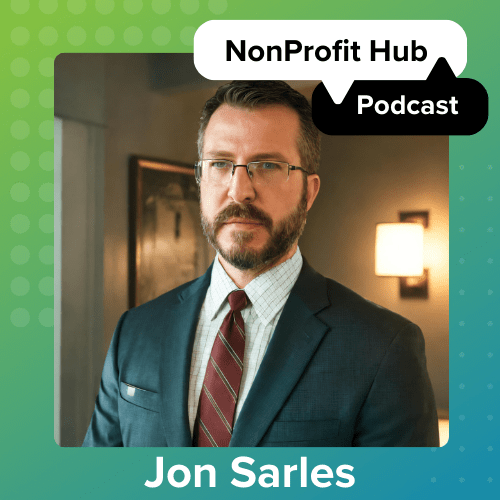Smoothing Turnover Transitions: Overview and Process
Employee turnover is an inevitable part of running a business. People move on for a variety of reasons. Still, no matter the situation, these events can significantly impact every organization and the remaining employees who shoulder this burden. Without a transition strategy, a teammate’s exit can leave a hole in your organization. This can cause overworked, stressed employees and a loss of critical institutional knowledge.
With proper planning, such occurrences do not have to disrupt your workplace significantly. This guide will discuss the importance of transition planning and detail the steps to establish such initiatives.
Employee Turnover Is Part of the Business Lifecycle
In any business, the fluidity of its workforce is constant. Some transitions occur due to promotions and reorganizations. You can manage these changes. When the turnover results from an individual separating unexpectedly – either involuntarily or by their own choice – having a plan to maintain productivity and day-to-day operations is vital.
No organization can eliminate unexpected turnover. But, how you anticipate and plan for such events directly affects the engagement and productivity of the remaining team members. Terminating an employment relationship can also negatively impact the organization’s ability to reach long-term goals.
If the departing individual is a central figure, certain aspects of your business could grind to a halt. For example, financing may be at risk if the departing person is integral to your fundraising efforts and has special relationships with supporters.
With upfront planning, you will be prepared to weather these unavoidable workforce changes and prevent serious disruption to fulfilling your mission.
Why Organizations Need Transition Plans
When you have forewarning that an employee is moving on, you have the luxury of time. It allows you to create a strategy for filling the position and getting a new person up to speed. When the news comes as a surprise, it can leave managers flat-footed and coworkers overwhelmed.
Transition plans are essential to guide managers through these rough spots with actionable steps, not just theoretical suggestions. By identifying concrete tasks to complete, filling the position and acclimating the new colleague will be as seamless as possible. Checklists and other tools in your plan will alert managers to critical details. It ensures that key responsibilities and information sharing do not fall through the cracks.
Be Proactive – Have Your Plan Ready to Go
Waiting to put your plan together until you have an immediate need places you in a compromised position. Suppose the employee announces their intention to leave the organization with little notice or termination is effective immediately. In that case, you may not have sufficient time to implement a thoughtful transition strategy. You will play catch up, which only complicates an already stressful situation.
Once you have created your overall transition strategy, share it with your staff, especially managers and supervisors. If your team knows that the organization has prepared for these events, they may feel less apprehensive when they learn of a colleague’s plans and experience less burnout during the transition phase.
Additionally, your plan should communicate organizational expectations regarding resignation and company obligations when an employee quits. An informed workforce will feel more confident that management has control of the situation. This allows associates to focus on their primary responsibilities – serving your constituents.
Establishing Your Plan
Typically, leadership and Human Resources lead in developing a plan’s framework. Many nonprofits do not have the scale to support a full-time HR function, so others, such as line managers, team leads, or office managers, may step into this space. Alternatively, you may consider hiring an outside consultant to assist you.
Once identified, the team should scope out overarching principles, objectives, and guidelines applicable to any transitional situation. To be effective, the finer details of the transition roadmap should incorporate input from relevant stakeholders. In some cases, the development of these points may need to wait for an actual need to arise. In larger organizations, department-specific plans may be useful.
One of the first activities to tackle when preparing a reliable transition plan is reviewing or drafting job descriptions. Up-to-date job descriptions serve two purposes. The first is to identify each position’s responsibilities. This will help management to grasp which tasks will need immediate attention when an employee vacates a particular role. Job descriptions are also the perfect starting point for writing job postings when you are ready to search for a replacement.
Nonprofits are often nimble, with individuals wearing many hats, and their responsibilities frequently shift as the organization grows and focuses on new priorities. Regularly checking in with employees about their workload and deliverables can help keep your job descriptions current and your organization prepared to take action to fill an open position quickly.
This is an appropriate time for organizations of sufficient size to review or consider establishing succession plans for key positions.
Put in Place Standardized Practices
Consistency in company-wide policies and procedures focusing on employee separations will make everyone’s job more manageable. These resources will also instill confidence in leadership’s ability to guide the organization through what is often a stressful time.
Specifically, policies and procedures related to promotions, separations, and terminations should be reviewed and updated to reflect current practices and address any gaps. As part of this process, give special attention to how the organization administers final pay, benefits termination, and exit interviews.
Preservation of knowledge and data is also a key consideration. Employees should understand how to back up work, record tasks, and share know-how. Cross-training team members is a good practice because it broadens institutional knowledge and reduces the risk of hampering workflow. Also, it allows for coverage in a colleague’s absence for a short period (e.g., vacation or illness) or when an individual permanently separates from the organization.
Handle communication about an employee’s departure carefully. Establish guidelines on sharing information about the separation. Keep in mind that it is crucial to identify who should be informed and to protect the privacy of all parties involved.
If you are unsure if your policies are up-to-date and legally compliant, you should consider conducting an HR audit to identify deficiencies and areas needing improvement.
What to Include
Organizations must design a transition plan that aligns with their business plan, culture, organizational structure, size, and work distribution. Strategies for small nonprofits may look very different from those implemented at larger organizations. However, all effective transition strategies include some standard features and action steps.
Scheduling a transition or turnover meeting is a good starting point. This meeting should include HR, the relevant manager or supervisor, key coworkers, and, if possible, the departing employee. This may require more than one meeting.
Topics addressed should focus on:
- Daily responsibilities
- Open or ongoing projects
- Key contacts and stakeholders
- Location of files (hardcopy and digital)
- Passwords
- Measurable objectives
Additional plan components include:
- Checklists that spell out key tasks and timelines
- A talent search roadmap
- Introductions to stakeholders, contacts, clients, and accounts
- Methods for preserving and transferring knowledge and skills
- Documentation
- Shadowing the outgoing employee or other team members
- Training sessions
- Feedback and exit interviews
- Appropriate forums for wishing the departing employee farewell, so they leave with a positive impression of the organization
Things can move rapidly once an employee makes their intention to leave known. Maintaining an organizer (hardcopy or digital) housing all the relevant policies, templates, and checklists may help things run smoothly during this busy time.
However detailed you decide to make your plan, with it in place, you will prepare to take immediate action upon learning of an employee’s pending separation from the organization.
Implementing Your Plan When a Departure is Imminent
Once you know a specific employee’s service is ending, it is time to customize your transition plan. You are now in the position to develop a concrete approach to the departure of a particular employee and fill that position. Where appropriate, involve the outgoing employee and seek their input to the extent possible.
The turnover meeting should be a priority, making an effort to schedule this meeting so the person currently on the job can attend. They know their role the best, and the information they share may make the days ahead less hectic. Before their departure, ask this individual to create an exit document outlining their daily tasks and overall responsibilities, highlighting unfinished business, and identifying files, data, systems, and other information that would be helpful to the incoming team member.
Ideally, the current employee and the new hire will overlap, even for a short timeframe. When this is possible, the veteran employee can provide critical on-the-job training. The new team member can shadow them and benefit from introductions to workflow, stakeholders, and organizational systems.
For a variety of reasons, this observational period is often not possible. In these instances, managers and other team members will need to take on these orientation tasks, and it will be helpful for those on point to sit with the employee before their last day to gain as much insight into the function as possible. Depending on the circumstances, it may also be advisable to ask the employee’s opinion regarding whom on the team might be best suited to take on their duties while the company selects a replacement.
Careful Work Upfront Can Ease Future Stress
As we know, preparation puts you in a better position to handle difficult situations when they arise. While you cannot plan for every contingency, employee departures are a known part of any organization’s life cycle, making it the perfect opportunity for pre-planning. Transition planning requires leadership commitment and the diligence of those developing the strategy. Still, all that hard work will pay off in the long run as you adeptly navigate future employee departures.







